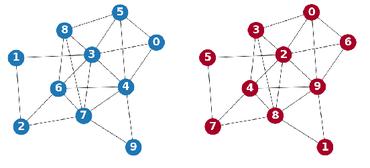Structure Your Data: Towards Semantic Graph Counterfactuals
Counterfactual explanations (CEs) based on concepts are explanations that consider alternative scenarios to understand which high-level semantic features contributed to particular model predictions. In this work, we propose CEs based on the semantic graphs accompanying input data to achieve more descriptive, accurate, and human-aligned explanations. Building upon state-of-the-art (SoTA) conceptual attempts, we adopt a model-agnostic edit-based approach and introduce leveraging GNNs for efficient Graph Edit Distance (GED) computation. With a focus on the visual domain, we represent images as scene graphs and obtain their GNN embeddings to bypass solving the NP-hard graph similarity problem for all input pairs, an integral part of the CE computation process. We apply our method to benchmark and real-world datasets with varying difficulty and availability of semantic annotations. Testing on diverse classifiers, we find that our CEs outperform previous SoTA explanation models based on semantics, including both white and black-box as well as conceptual and pixel-level approaches. Their superiority is proven quantitatively and qualitatively, as validated by human subjects, highlighting the significance of leveraging semantic edges in the presence of intricate relationships. Our model-agnostic graph-based approach is widely applicable and easily extensible, producing actionable explanations across different contexts.
PDF Abstract


 CUB-200-2011
CUB-200-2011